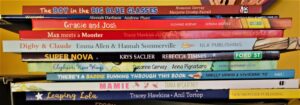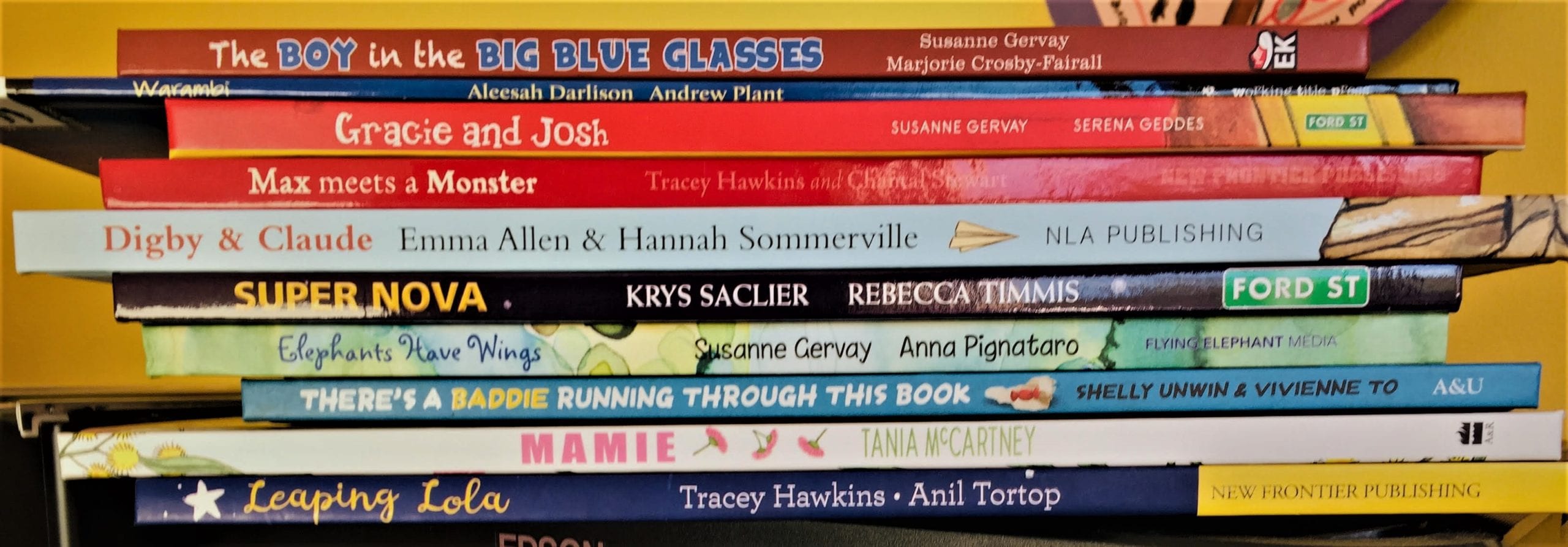Picture books have terrible PR. Ask any librarian: after a certain age, children just aren’t interested in the picture book section anymore.
~ Rebecca Serle ~
Close your eyes for a sec and conjure up an image of a person reading a picture book. What age is this person? Alternatively, if you’re a teacher, visualise yourself reading a picture book to a class. What year level are they?

If you saw a toddler pawing through a dog-eared book, or an adult with a young child snuggled in their lap, or if you saw your class as a lively group of Kindergarten children —well, I’m not surprised.
Disappointed, but not surprised.
As a human society, we cannot function without classifying things and books are no exception. Here’s a quick rundown of books classified as KidLit (or Children’s Literature):Show 102550100 entriesSearch:
| Target Audience | |
|---|---|
| Board/Concept Books | Birth – 4 years |
| Picture Books | Ages 3 – 8 |
| Early Readers | Ages 5 – 7 |
| Junior Fiction (Chapter Books) | Ages 6 – 10 |
| Middle Grade Novels | Ages 8 – 12 |
| Tween Novels | Ages 10 – 14 |
| Young Adult (younger) | Ages 13 -16+ |
| Young Adult (older) | Ages 15 – 18+ |
| New Adult | Ages 17 – mid 20s |
Showing 1 to 9 of 9 entries
Source: https://writeforkids.org/blog/2017/07/understanding-childrens-book-categories/
SHOULD WE BE BUYING PICTURE BOOKS FOR OUR OLDER CHILDREN?
The problem is that this classification system pigeonholes us into thinking we can’t possibly buy a picture book for a 10-year-old or read a picture book to a Year 6 class.
Even worse — children, once they can read, absorb that attitude and avoid the picture book section of the library, or complain when their teacher pulls out a picture book.
It’s a baby book!
~ Pick any child over the age of nine ~
We need to change this, because we’re all missing out!
I am in no way advocating for pre-schoolers to be exposed to young adult novels, however, there is no reason why our young adults cannot read, enjoy and learn from picture books.
All the reading she had done had given her a view of life that they had never seen.
~ Roald Dahl (Matilda) ~
The underlying themes in picture books can be incredibly powerful, and a picture book is a quick way for teachers to explore these themes. Allow me to give you three examples:
ESSENTIAL THEMES #1: RESILIENCE, ACCEPTANCE AND SELF-WORTH
This theme is massive! And hugely important in today’s society.
It falls under the Australian Curriculum’s General Capability section: Personal and Social Capability and spans the Foundation (Kindergarten) to Year 10 Curriculum.
A couple of picture books that spring to mind instantly are:
- Leaping Lola, by Tracey Hawkins and Anil Tortrop
- Super Nova, by Krys Saclier and Rebecca Timmis
And my all-time favourite, written by Susanne Gervay and illustrated by Marjorie Crosby-Fairall, The Boy in the Big Blue Glasses.
ESSENTIAL THEMES #2: ENVIRONMENT, CONSERVATION AND SUSTAINABILITY
Again, anything centred around environmental issues is of great importance to children. Sustainability is a Cross-Curriculum Priority in the Australian Curriculum, again, spanning Foundation to Year 10.
There are a lot of ‘age appropriate’ factual texts written about this theme, but why should we limit our older students to these when there are increasing numbers of picture books which also deal with this issue?
Look around, they’re not hard to find:
ESSENTIAL THEMES #3: CHILDHOOD PASSIONS INTO ADULT ENDEAVOURS
This one’s a bit harder to explain. Essentially, these types of stories take a snapshot in the childhood life of someone well-known and allow the reader to see how the little dreams and experiences of a child can lead to adult success.
You will find these themes buried within subject areas in the Australian Curriculum – so, for example, a book about a scientist can be useful in exploring Science as a Human Endeavour.
Two of the Australian picture books that I absolutely love because they do this so well are:
- Mamie, by Tania McCartney (exploring a moment in the childhood of May Gibbs)
- Trouble in the Surf, by Stephanie Owen Reeder and Briony Stewart (covering a rather scary moment in the childhood of Charles Kingsford Smith, and how this contributed to the formation of the voluntary lifesaving movement)
As a Teacher, where would I use the picture books I’ve mentioned above?
Quite simply – all year levels, but particularly Years 5 – 8.
IF YOU STOP READING PICTURE BOOKS AFTER A CERTAIN AGE, YOU’VE LOST AN OPPORTUNITY
I don’t often find myself disagreeing with Jim Rohn, but on this matter … well, let’s just say, I think it had been a long time since he’d picked up a picture book when he said this. Poor guy.
Don’t just read the easy stuff. You might be entertained by it, but you will never grow from it.
